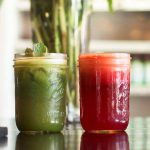In the heart of every home, the kitchen is not just the place for culinary creativity but also where a significant portion of your household’s water consumption is centered. With water scarcity concerns rising and the cost of utilities mirroring that ascent, it’s more vital than ever to adopt plumbing practices that are both eco-friendly and economically savvy. Here are ten eco-conscious plumbing practices that will not only save you from dealing with a costly kitchen plumbing repair bill but also help conserve water and reduce your carbon footprint.
Install Low-Flow Faucets and Aerators
One of the simplest ways to reduce water use is by installing low-flow faucets and aerators. These handy devices mix air with the water, maintaining a consistent flow while using significantly less water. For instance, a conventional faucet flows at a rate of 2.2 gallons per minute (GPM), while a low-flow faucet reduces this to 1.5 GPM or even less. The installation is straightforward and can often be done without a plumber, saving immediate water and costs.
Fix Leaks Promptly
According to the Environmental Protection Agency (EPA), household leaks can account for more than 10,000 gallons of water wasted annually – the equivalent of a year’s supply for one household. Inspect your kitchen regularly for leaks in faucets, under your sink, or around your dishwasher and fridge. Promptly fixing these can save you gallons of water and a chunk of change on your water bill.
Opt for Multi-Tasking Sinks
The design of your kitchen sink can play a significant role in how much water you use. Consider a double-basin sink or a model that includes a smaller side for washing and a larger compartment for rinsing, which allows you to use less water overall. Invest in sink accessories like drain baskets and sprayers that make the most of water usage.
Use Efficient Dishwashing Techniques
When handwashing dishes, it’s essential to practice water-efficient techniques. Instead of letting the water run, fill one side of the sink with soapy water and the other with rinse water. For those with a dishwasher, ensure it’s fully loaded before running it, maximizing the appliance’s water and energy efficiency. Scrap off food waste instead of pre-rinsing dishes to save additional water.
Educate Your Family on Water Conservation
An often overlooked yet powerful tool in the fight against water wastage is education. Teach your family members why water conservation is critical and provide practical tips on being mindful of their water use in the kitchen. Encourage everyone in the household to adopt the practices mentioned here and make it a collective effort to save water and money.
Finally, nothing beats the assurance of a professional’s touch. Consider scheduling routine check-ups with a plumber to inspect your kitchen’s plumbing system. They can identify potential issues early, like hidden leaks or inefficient piping, helping you to rectify problems before they become more significant and expensive. Schedule a service
appointment today!







